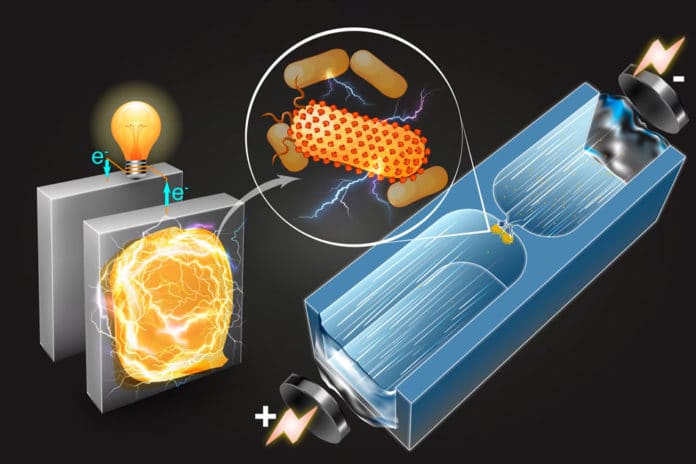MIT scientists have developed a new microfluidic method that allows microbes to be used as fuel and purify sewage water. The aim was to pick out those strongest candidates to do the desirable tasks that humans want the cells to do.
Bacteria that produce electricity do so by generating electrons within their cells, then transferring those electrons across their cell membranes via tiny channels formed by surface proteins, in a process known as extracellular electron transfer, or EET.
Existing techniques for probing bacteria’s electrochemical activity involve growing large batches of cells and measuring the activity of EET proteins — a meticulous, time-consuming process.
To achieve the goal, scientists measured the property known as polarizability, or the ability to form instantaneous dipoles, which is known to be highly correlated with bacteria’s electricity production ability. This technique is safe and more efficient than existing techniques that require growing large batches of cells and looking for the activity of proteins which are active in the EET process.
Scientists also developed microfluidic chips to get itched by tiny channels which samples of bacteria can flow through, with an hourglass-shaped pinch in each channel.
At the point when a voltage is connected to the channel, the little size of the pinched section squeezes the electric field to make it a stronger than in the encompassing zone. This makes a phenomenon known as dielectrophoresis where particles can be stopped or repelled relying upon their surface properties — for this situation, as indicated by the microscopic organisms’ electrochemical movement.
Some bacteria were trapped at lower applied voltages, and others at higher voltages. Scientists took note of the “trapping voltage” for each bacterial cell, measured their cell sizes, and then used a computer simulation to calculate a cell’s polarizability — how easy it is for a cell to form electric dipoles in response to an external electric field.
From the calculations, scientists discovered that bacteria that were more electrochemically active tended to have higher polarizability.
Cullen Buie, associate professor of mechanical engineering at MIT, said in a statement said, “There is recent work suggesting there might be a much broader range of bacteria that have [electricity-producing] properties. Thus, a tool that allows you to probe those organisms could be much more important than we thought. It’s not just a small handful of microbes that can do this.”
Qianru Wang, a postdoc in MIT’s Department of Mechanical Engineering said, “We have the necessary evidence to see that there’s a strong correlation between polarizability and electrochemical activity. In fact, polarizability might be something we could use as a proxy to select microorganisms with high electrochemical activity.”
Scientists have published their results today in Science Advances.
